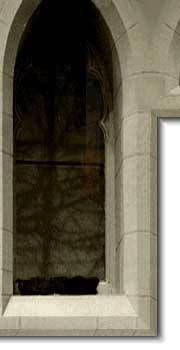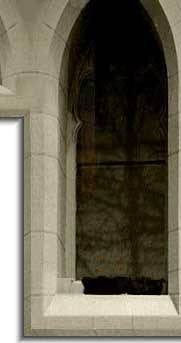

Siapakah Santo Matias:
Tindakan para rasul yang
pertama setelah Yesus naik ke surga adalah memilih pengganti Yudas
Iskariot. Mereka memfokuskan diri untuk mencari rasul kedua belas. Angka
dua belas penting bagi bangsa yang terpilih, karena mewakili ke-12 suku
bangsa Israel. Kalau Israel yang Baru datang dari murid-murid Yesus,
maka dibutuhkan rasul ke-12. Tetapi Yesus telah memilih ke-12 rasul,
bagaimana mereka tahu siapa yang akan mereka pilih? Seratus dua puluh
orang berkumpul dan berdoa di ruang atas ketika Petrus berdiri untuk
mengajukan cara melakukan pemilihan.


-
- Profile
- Apostle. As he could bear witness to the Resurrection of Jesus, he was chosen to replace Judas Iscariot. Preached the Gospel for more than 30 years in Judea, Cappadocia, Egypt and Ethiopia. Remembered for preaching the need for mortification of the flesh with regard to all its sensual and irregular desires. Martyr. Some of his relics are in the abatical church of Triers, others in Saint Mary Major in Rome.
- Died
- 80; stoned to death @ Colchis
- Name Meaning
- gift of Yahweh (Mattithiah)
- Patronage
- alcoholism, carpenters, reformed alcoholics, smallpox, tailors
 |
Petrus menentukan kriterianya: Rasul yang baru harus sudah menjadi murid Yesus sejak awal dan tetap setia ketika banyak orang meninggalkan Yesus karena ajaran-ajaranNya. Dua orang memenuhi kriteria: Matias dan Yusuf yang disebut Barsabas. Mereka membuang undi dan Matias terpilih untuk ditambahkan kedalam bilangan 12 rasul (Kisah Para Rasul 1:15-26). Beberapa tradisi
melaporkan bahwa Santo Matias mewartakan Kabar Gembira di Palestina,
Kapadokia atau Etiopia. Dia meninggal sebagai martir. Dalam dunia seni
dilambangkan dengan sebuah salib dan sebuah halberd (semacam
kampak dengan ujung tombak), alat yang dipergunakan untuk membunuhnya.
Lambang lainnya adalah sebilah kapak dengan buku putih terbuka yang
bertuliskan "super Mathiam". Dirayakan tiap tanggal 24
Februari (Ritus Roma/Latin) dan 9 Agustus (Ritus Bizantium/Timur). |
The Greek Matthias (or, in some manuscripts, Maththias), is a name derived from Mattathias, Heb. Mattithiah, signifying "gift of Yahweh." Matthias was one of the seventy disciples of Jesus, and had been with Him from His baptism by John to the Ascension (Acts i, 21, 22). It is related (Acts, i, 15-26) that in the days following the Ascension, Peter proposed to the assembled brethren, who numbered one hundred and twenty, that they choose one to fill the place of the traitor Judas in the Apostolate. Two disciples, Joseph, called Barsabas, and Matthias were selected, and lots were drawn, with the result in favour of Matthias, who thus became associated with the eleven Apostles. Zeller has declared this narrative unhistoric, on the plea that the Apostles were in Galilee after the death of Jesus. As a matter of fact they did return to Galilee, but the Acts of the Apostles clearly state that about the feast of Pentecost they went back to Jerusalem.
All further information concerning the life and death of Matthias is vague and contradictory. According to Nicephorus (Hist. eccl., 2, 40), he first preached the Gospel in Judea, then in Ethiopia (that is to say, Colchis) and was crucified. The Synopsis of Dorotheus contains this tradition: Matthias in interiore AEthiopia, ubi Hyssus maris portus et Phasis fluvius est, hominibus barbaris et carnivoris praedicavit Evangelium. Mortuus est autem in Sebastopoli, ibique prope templum Solis sepultus (Matthias preached the Gospel to barbarians and cannibals in the interior of Ethiopia, at the harbour of the sea of Hyssus, at the mouth of the river Phasis. He died at Sebastopolis, and was buried there, near the Temple of the Sun). Still another tradition maintains that Matthias was stoned at Jerusalem by the Jews, and then beheaded (cf. Tillemont, "Mémoires pour servir à l'histoire eccl. des six premiers siècles", I, 406-7). It is said that St. Helena brought the relics of St. Matthias to Rome, and that a portion of them was at Trier. Bollandus (Acta SS., May, III) doubts if the relics that are in Rome are not rather those of the St. Matthias who was Bishop of Jerusalem about the year 120, and whose history would seem to have been confounded with that of the Apostle. The Latin Church celebrates the feast of St. Matthias on 24 February and the Greek Church on 9 August.
Clement of Alexandria (Strom., III, 4) records a sentence that the Nicolaitans ascribe to Matthias: "we must combat our flesh, set no value upon it, and concede to it nothing that can flatter it, but rather increase the growth of our soul by faith and knowledge". This teaching was probably found in the Gospel of Matthias which was mentioned by Origen (Hom. i in Lucam); by Eusebius (Hist. eccl., III, 25), who attributes it to heretics; by St. Jerome (Praef. in Matth.), and in the Decree of Gelasius (VI, 8) which declares it apocryphal. It is at the end of the list of the Codex Barrocciamus (206). This Gospel is probably the document whence Clement of Alexandria quoted several passages, saying that they were borrowed from the traditions of Matthias, Paradoseis, the testimony of which he claimed to have been invoked by the heretics Valentinus, Marcion, and Basilides (Strom., VII, 17). According to the Philosophoumena, VII, 20, Basilides quoted apocryphal discourses, which he attributed to Matthias. These three writings: the gospel, the Traditions, and the Apocryphal Discourses were identified by Zahn (Gesch. des N. T. Kanon, II, 751), but Harnack (Chron. der altchrist. Litteratur, 597) denies this identification. Tischendorf ("Acta apostolorum apocrypha", Leipzig, l85I) published after Thilo, 1846, "Acta Andreae et Matthiae in urbe anthropophagarum ", which, according to Lipsius, belonged to the middle of the second century. This apocrypha relates that Matthias went among the cannibals and, being cast into prison, was delivered by Andrew. Needless to say, the entire narrative is without historical value. Moreover, it should be remembered that, in the apocryphal writings, Matthew and Matthias have sometimes been confounded
at agendakatolik.com
Developed by Webmaster